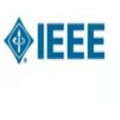New optical technologies offer the ability to reconfigure network topologies dynamically, rather than setting them once and for all. This is true in both optical wide area networks (optical WANs) and in datacenters, despite the many differences between these two settings. Because of these new technologies, there has been a surge of both practical and theoretical research on algorithms to take advantage of them. In particular, Jia et al. [INFOCOM '17] designed online scheduling algorithms for dynamically reconfigurable topologies for both the makespan and sum of completion times objectives. In this paper, we work in the same setting but study an objective that is more meaningful in an online setting: the sum of flow times. The flow time of a job is the total amount of time that it spends in the system, which may be considerably smaller than its completion time if it is released late. We provide competitive algorithms for the online setting with speed augmentation, and also give a lower bound proving that speed augmentation is in fact necessary. As a side effect of our techniques, we also improve and generalize the results of Jia et al. on completion times by giving an $O(1)$-competitive algorithm for arbitrary sizes and release times even when nodes have different degree bounds, and moreover allow for the weighted sum of completion times (or flow times).
翻译:新的光学技术提供了动态重新配置网络地形的能力,而不是一劳永逸地设定网络地形,尽管这两个环境之间存在许多差异,但在光广区域网络(光广广广广域网)和数据中心都是如此。由于这些新技术,对算法的实践和理论研究都激增,以便利用这些算法。特别是,Jia等人[INFOCOM'17]设计了动态重新配置网络地形的在线排程算法,以动态重新配置完成时间目标的大小和总和。在本文中,我们在同一环境中工作,但研究一个在网上环境中更有意义的目标:流动时间的总和。一个工作的流程时间是其在系统中花费的全部时间,如果延迟发布,则可能大大少于其完成时间。我们为在线设置的加快速度设置提供了竞争性算法,并且提供了较低的约束性证明速度提高是确实必要的。作为我们技术的副作用,我们还改进和普及了在网上设置一个更有意义的目标:流动时间的总和时间是流动时间。一个工作的流动时间是整个系统的总时间,如果允许有一定的顺序,那么完成时间是任意的,那么,完成时间,就会允许一个有一定的顺序的美元的顺序,完成时间,而使完成时间的美元的算算。




